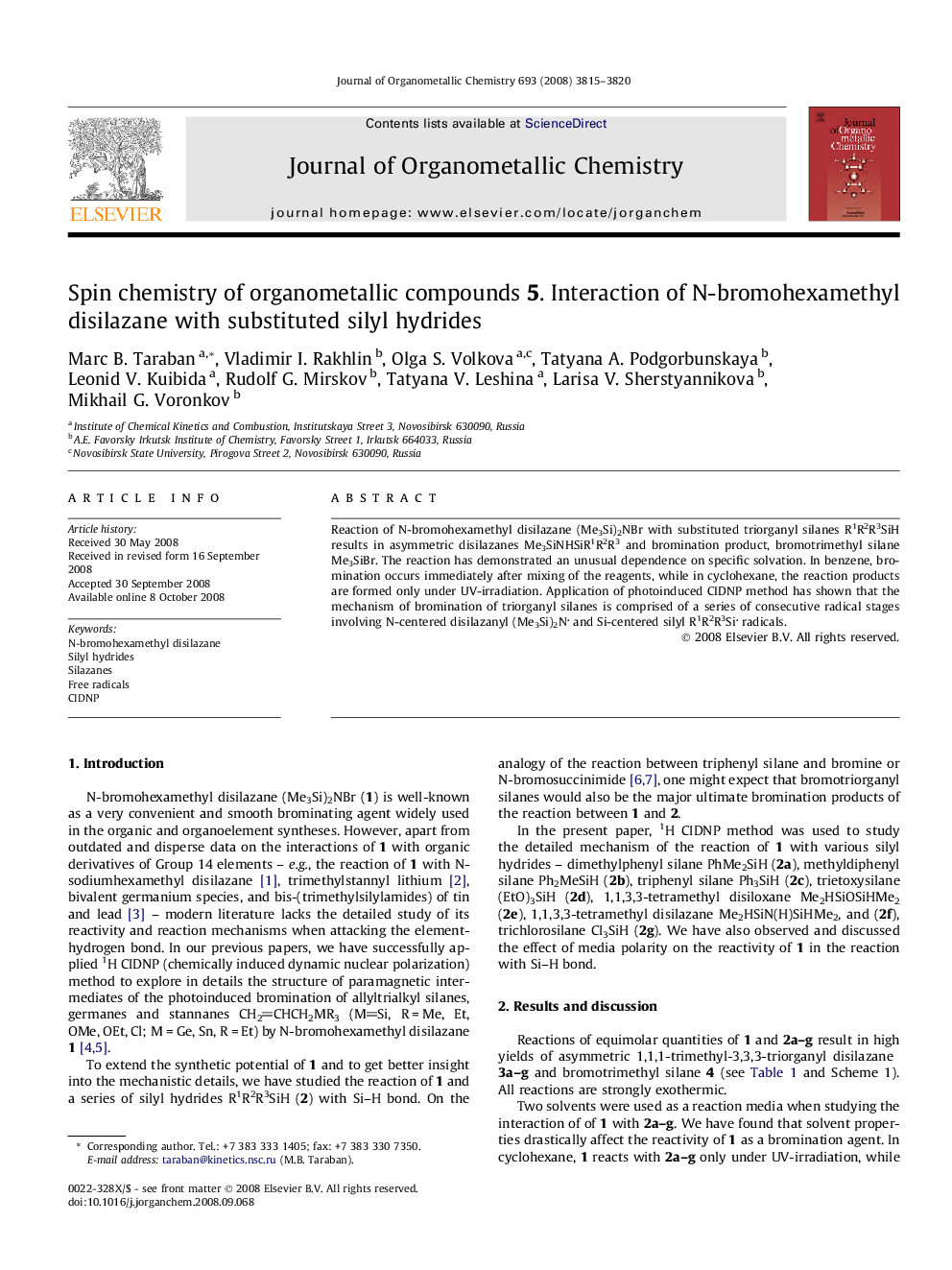| Article ID | Journal | Published Year | Pages | File Type |
|---|---|---|---|---|
| 1326867 | Journal of Organometallic Chemistry | 2008 | 6 Pages |
Reaction of N-bromohexamethyl disilazane (Me3Si)2NBr with substituted triorganyl silanes R1R2R3SiH results in asymmetric disilazanes Me3SiNHSiR1R2R3 and bromination product, bromotrimethyl silane Me3SiBr. The reaction has demonstrated an unusual dependence on specific solvation. In benzene, bromination occurs immediately after mixing of the reagents, while in cyclohexane, the reaction products are formed only under UV-irradiation. Application of photoinduced CIDNP method has shown that the mechanism of bromination of triorganyl silanes is comprised of a series of consecutive radical stages involving N-centered disilazanyl (Me3Si)2N and Si-centered silyl R1R2R3Si radicals.
Graphical abstractReaction of (Me3Si)2NBr with substituted silyl hydrides shows unusual dependence on nonspecific solvent interactions – in benzene, it proceeds after the mixing of reagents, while in cyclohexane, the products are formed only under UV-irradiation. Photoinduced bromination involves (Me3Si)2N and R1R2R3Si radicals, whereas in benzene, 4-centered activated complex is probably formed.Figure optionsDownload full-size imageDownload as PowerPoint slide
